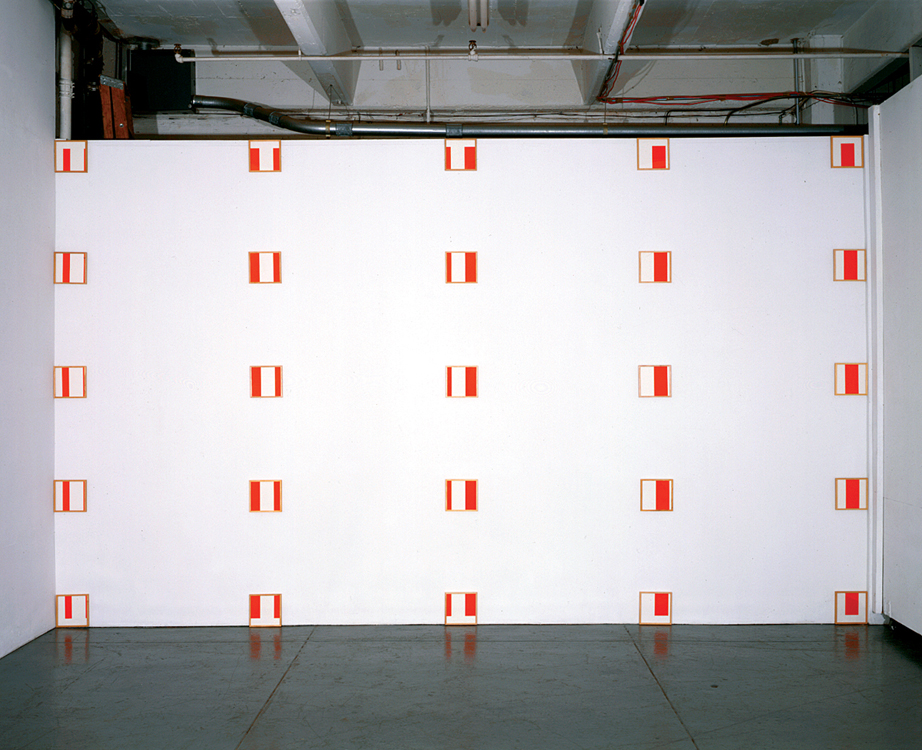Daniel Buren
Art is supposed to open your eyes, to make your eyes one of the main instruments in your body, active to the spirit, to the mind.
Daniel Buren is a site-specific artist whose imagery consists of vertical stripes. The stripes are a “visual instrument” that allow him to appropriate and transform space with paintings, sculptures and installations. As described by the Bortolami Dayan Gallery, he uses the generality of stripes “to create an art that defies a traditional definition of art as an object for aesthetic contemplation—[his work challenges] the conventional notions of where art can be seen and how it can be understood.”
Buren was born in 1938 in Boulogne-Billancourt, France, and studied painting at the École National des Métiers d’Art, Paris. Rejecting the classical teachings of the Paris school, he painted abstract shapes and lines. In 1965, he transformed his work after finding a piece of awning fabric with alternating white and colored stripes. He simplified his imagery to vertical lines and focused on the canvas size and location. In 1966, he created abstract paintings and performed with artists Olivier Mosset, Michel Parmentier and Niele Toroni to fight the traditional practices of the Paris Art Establishment.
Buren’s first one-person exhibition was in 1968 at the Apollinaire Gallery in Milan, Italy. He “closed” the gallery by blocking the entrance with striped paper, saying he “wanted to show the consequences of a specific work.” Expanding on this idea, in 1971 he created a 66 foot banner, Peinture-Sculpture, to divide the Soloman R. Guggenheim Museum’s rotunda in New York. The piece was protested and removed after one day because it obstructed the view to surrounding works. By the 1980s Buren had exhibited throughout Europe, America and Japan.
In 1986, he created his first permanent public work, Les Deux Plateaux, for the Palais Royal Court, Paris. This controversial 10,000 square-foot sculpture of 260 black and white striped stumps integrates contemporary art with historic architecture. Also in 1986 he received the Golden Lion Award at the Venice Biennale; he has exhibited there ten times since. Following these achievements, he attained leading-French-artist status from President François Mitterrand. In 1990, New Zealand honored him as a Living Treasure for their 150th anniversary and in 1991 he received the International Award for the Best Artist given in Stuttgart, Germany, followed by the Grand Prix National de Peinture in France, 1992.
Since the 1990s, Buren’s work has become more architectural. He creates new spaces within existing environments such as beaches (Le Vent soufle où il veut, 2009), city centers (A Colored Square in the Sky, 2007), public parks (La Cabane Éclatée aux 4 Salles, 2005) and entire museums (The Eye of the Storm, 2005). In 2007, the Japan Art Association awarded him the Praemium Imperiale for international distinction in the arts. He has exhibited world-wide in museums including the Tokyo Metropolitan Art Museum, Japan; the Centre Pompidou, Paris; and the Neues Museum, Nuremburg. He has produced over 80 public installations, including major sculptures for the Palais de Tokyo, the Parc du Château de Versailles and the Temple of Heaven, Beijing.
-Courtney Sennish, Crown Point Press
